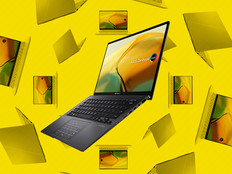How to Repel Notebook Thieves
Loss prevention, asset protection, inventory management: However your organization phrases it, protecting enterprise assets (and consequently, intellectual property) is a crucial role of every IT department. Like any key undertaking, the hardest part can be figuring out where to begin. Fortunately, there are several technologies that can make protecting an organization’s interests much more manageable.
1. Use Lockable Docking Stations Whenever Possible
In a perfect world, mobile professionals either lock their offices or take their notebooks with them when they leave at the end of the day. Unfortunately, no amount of user training will ensure that this always happens. An alarming number of employees may place their notebook in a desk drawer, or worse, leave it out in plain sight. The key to preventing theft in such cases is to make it as convenient as possible for users to be diligent.
One of the most affordable ways to foster this is to provide lockable docking stations. These are typically available at a nominal price, and most come with two numbered keys: one that can stay with the IT department and the other to give to users. Ideally, the dock should also be secured to a desk. But even when that isn’t possible, just making it more difficult to quickly snatch the device can be enough to discourage fly-by thefts.
2. Secure Portable Devices with Cable Locks
A large number of computers and peripherals already come equipped with Kensington Security Slots (also known as K Slots). These oval-shaped cavities make use of a relatively inexpensive yet resilient cable lock. They are typically difficult to defeat without causing substantial damage to the attached device, effectively making theft of the unit more trouble than it is worth.
K Slots aren’t the only type of lock available. Kensington and other manufacturers also make locks that attach to common ports, such as VGA or serial, that screw in using special fasteners and can then loop around furniture or fixtures.
3. Place RFID in High-Traffic Areas
If your office has several points of entry and a lot of foot traffic, consider investing in Radio Frequency ID technology. RFID allows electronic asset tags to be embedded in valuable equipment, which will trigger an event if the device comes within proximity of a scanner. Scanners can be hidden anywhere — on furniture, under ceiling tiles or near doorways and stairwells. When an event is triggered, the RFID system can sound an alarm, enable camera recording or even send an alert to a mobile phone. This type of setup will save an organization the expense of round-the-clock surveillance while presenting immediate visibility of a theft as it occurs.
4. Invest in Asset Recovery Technology
Even if a notebook, desktop or tablet is stolen, companies can still protect their data. Consider a solution such as Absolute Software’s LoJack for Laptops, which can be loaded onto a device either at the point of sale or by the end user. Once running, LoJack checks in daily with a central server. If the device is reported stolen, the server can send a command to erase the device and report its location, by using either the on-board GPS or IP information. Once that information is obtained, Absolute will share it with local law enforcement.
5. Protect Sensitive Data with BitLocker
The worst part of having a computer stolen is the threat of sensitive data falling into the wrong hands. Organizations using the Enterprise and Ultimate editions of Windows Vista and Windows 7 can avoid that threat by using Windows’ built-in BitLocker technology. In a nutshell, BitLocker can encrypt an entire volume on a given machine’s hard drive, rendering it unreadable without an assigned Trusted Platform Module (TPM) chip, USB key or personal identification number. This will prevent unauthorized access to the contents of the drive, even if it’s removed and mounted in another PC.








